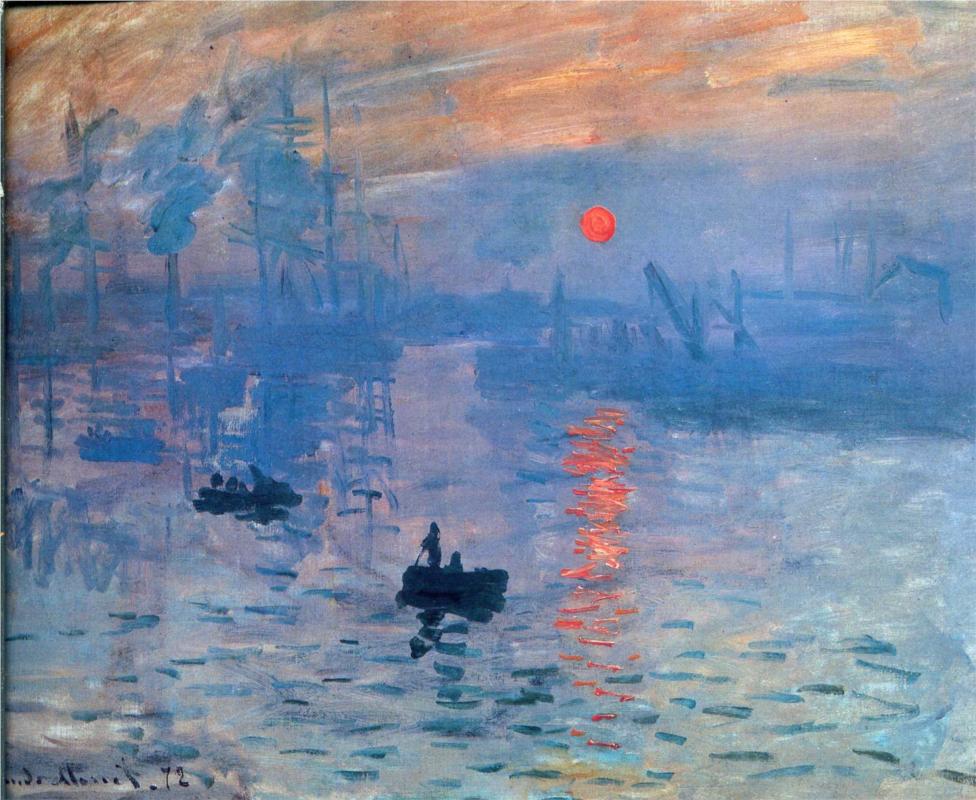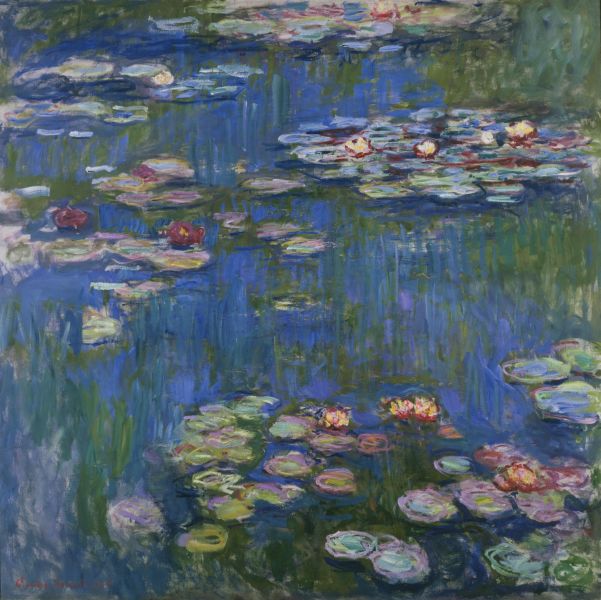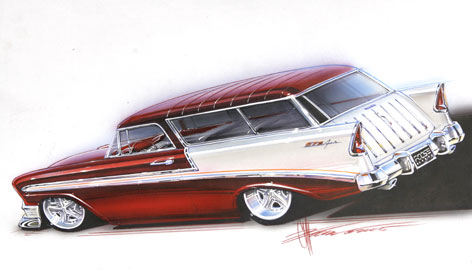"Michael received his first art scholarship in Grade 2 and from this early interest it was natural for Michael to gravitate toward a career in art. With a strong focus on commercial illustration, he graduated from the Graphic Design program at Grant MacEwan College in Edmonton, Alberta. His use of watercolor, together with his background in architectural illustration, incredible talent, and his love of classic cars, have proved instrumental in developing Michael's passion for automotive art." (http://www.michaelirvine.com/)
Wednesday, March 19, 2014
Michael Irvine
Having an extreme passion for automobiles from childhood Michael Irvine has dedicated his work towards capturing classic American Muscle cars and sports cars. He uses watercolor paint to create these amazing vibrant pictures of vehicles mostly throughout the 50' 60's and 70's. His paintings usually tell a story and the more you look at them the more you see. His goal is to draw the viewer into the scene while slowly revealing more of the story before them.
Claude Monet
The master of the impressionist movement Claude Monet painted many beautiful landscapes as well as some portraits. He used a style that was very representational but in his paintings you could see the brushwork. Some of his work looks somewhat similar to that of Van Gogh's but Monet's is more realistic. He painted things like meadows, flowers, trees and other landscapes. He liked to paint objects and scenes from our everyday lives. His most famous and most recognized works are most likely the paintings of the water lilies and paintings of the haystacks. Many people were lost in his work because that had not seen paintings like this before. They created a new genre of art around his work and other painters who were doing similar style called Impressionism. He was at first victim of some criticism for his style. People would say that his paintings looked unfinished. But he enjoyed that style and it stayed with him through his entire career and made him very successful.
Wednesday, March 12, 2014
Chip Foose
This artist is not one that is commonly mentioned in the classical art world but he is a fantastic artist without question. Chip Foose is one of the biggest names in the custom car fabrication world and he even has his own TV show and brand. Chip Foose was an artist early on in his years and started working with his father in his company, Project Design. By age twelve, Chip already had five years experience under his belt, and had also painted his first car, a Porsche 356. In a chance meeting from Alex Tremulus, the designer of the "Tucker", was Chip's motivation to attend Art Center, where he majored in automotive product design and graduated in 1990 with honors. Much of his career has been centered around the automotive world. "Chip and his wife Lynne started their Huntington Beach, California based company Foose Design, an automotive and product design Development Company. His company specializes in illustration, graphics, ideation model making, surfacing and complete construction of automobiles and automotive related products."(http://www.chipfoose.com/) His TV show, Overhaulin' is a show where him and a team of highly skilled fabricators, painters, mechanics, autobody techs, etc. all take an old car for a week and transform it into a true piece of automotive beauty. When he begins working on a car he creates drawings of what the final project will look like.
Drawing by Chip Foose
Finished Truck
Vincent van Gogh
Vincent Van Gogh is most known for his work in the field of Impressionism at his most notable work and probably the most recognized is his painting "Starry Night." Van Gogh uses a very unique style where the viewer can see all of the brush strokes in the painting. He was born in 1853 and grew up in Holland. He and his art were never really aprriciated during his time and although he painted over 900 different pices he did not sell many. After just ten years of painting he took his own life in 1890. Within twenty years of his death, there were memorial shows of his works all over the world – influencing generations of artists to come.
Grant Wood
Grant Wood was an American painter who is best known for his paintings depicting the rural American Midwest, particularly the painting American Gothic, an iconic image of the 20th century. He was born in 1981 in Iowa and attended school at the School of the Art Institute of Chicago. From 1920 to 1928, he made four trips to Europe, where he studied many styles of painting, especially Impressionism and Post-Impressionism. But it was the work of the 15th-century Flemish artist Jan van Eyck that influenced him to take on the clarity of this new technique and to incorporate it in his new works. Wood's best known work is his 1930 painting American Gothic which featured a farmer and his daughter standing in front of a small white house with a Gothic-style window in the background. It is representative of traditional American rural values. The faces in this painting look depressed and almost rigid. This painting has been used in many other ways and has taken on many different roles through out the years through satire and recreations.
Norman Rockwell
Perhaps the most famous illustrator to come out of the 20th century Norman Rockwell was skilled with the paintbrush on canvas and paper alike and was a fantastic story teller through his work. He is most commonly thought of when mentioning the Saturday Evening Post covers that he did. He started working with the Saturday Evening Post in 1916 when he was 21 years old. He had shared a studio space with cartoonist Clyde Forsythe, who worked for the Post. "Forsythe helped Rockwell submit his first successful cover painting, Mother’s Day Off, to the Post in 1916. Forty-seven years later, Rockwell had published a total of 323 original covers for The Saturday Evening Post, the last in 1963." (www.saturdayeveningpost.com) He liked to scenes of everyday American life that people would not generally stop to take time to notice. Many of his paintings featured scenes of an idealized world or utopia where everything seemed to be going great and filled with happiness. In his later work he painted many scenes of human rights and freedom, specifically his interpretations of President Franklin Roosevelt's address to Congress about freedom. He also painted other Presidents like John F. Kennedy, Dwight Eisenhower, and Lyndon B. Johnson He died at his home in Stockbridge, Massachusetts on November 8, 1978 when he was 84.
Wednesday, March 5, 2014
Thomas Kinkade
Thomas Kinkade, the man known as the painter of light painted amazing very life like images from small cottages in the woods to brilliant cityscapes. His use of light in his images is creates such an illusion. His paintings look like you could almost walk right into them. All of his paintings have this sense of peacefulness and serenity. His art was inspired by his deep roots in faith. He was never really featured in any museums or galleries, but his success has come from him being a master salesman. To find his most notable work you might just look for the painting that was the best seller. Thomas Kinkade passed away April 6, 2012
"In my paintings I try to create worlds of tranquility, joy, and beauty." - Thomas Kinkade
"In my paintings I try to create worlds of tranquility, joy, and beauty." - Thomas Kinkade
Tuesday, March 4, 2014
Roy Lichtenstein
Roy Lichtenstein started his career as an artist with an attempt to breakthrough into the abstract expressionistic world that was popular during the 1940's through the early 1960's. He had very little success in this and he didn't have a style that was his own. His breakthrough moment though was in the 60's when his son challenged him to draw something that was as good as a cartoon. His idea was to paint cartoons and comics just as they appeared but on a large scale. His signature half tone images that came from comic strips were the paintings that made him so successful. He was one of the biggest influences in the pop art world. Because all of his famous paintings were similar in style Roy Lichtenstein basically created a brand out of his work that no one had really seen before. His work and influence has been seen in countless advertisements, billboards, commercials and it is still influencing modern advertising.
Subscribe to:
Posts (Atom)








.jpg)

























.jpg)